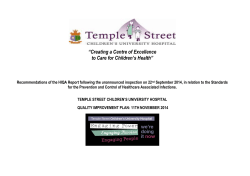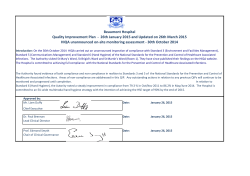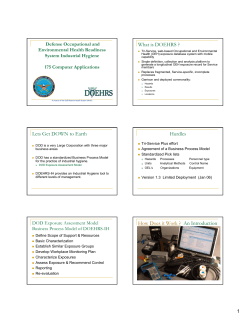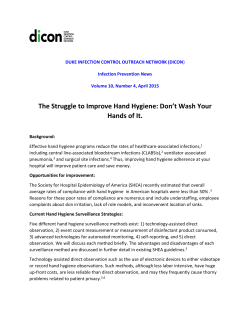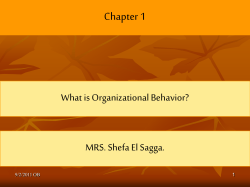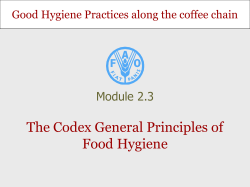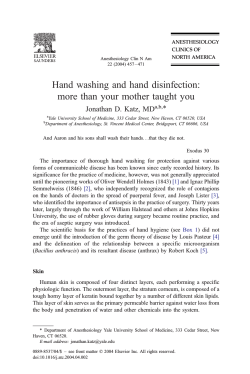
Chapter 3 Motivating Management of Organizational Behavior Eighth Edition
Chapter 3 Motivating Management of Organizational Behavior Leading Human Resources, Eighth Edition By, Paul Hersey, Denneth H. Blanchard, and Dewey E. Johnson The Hawthorne Studies • 1924 - Hawthorne, Illinois - Western Electric Company • Research - The effects of illumination on productivity • Productivity increased for both groups • 1927 - Researchers concluded that something other than illumination was affecting productivity Elton Mayo • Interviewed more than 20,000 employees • Workers felt valued and important • Focused attention on interpersonal relationships • Mayo concluded that people were primarily dominated by physiological and safety needs • Rabble Hypothesis Theory X and Theory Y Douglas McGregor Explained certain assumptions about human nature and human motivation Theory X • Work is distasteful • Most people are not ambitious, desire little responsibility, and prefer to be directed • Most have little capacity for creativity in solving organizational problems Theory Y • Work is natural if conditions are favorable • Self-control is often indispensable in achieving organizational goals • Capacity for creativity is widely distributed Theory X • Motivation occurs only at the physiological and security levels • Most must be closely controlled and often coerced to achieve goals Theory Y • Motivation occurs at the social, esteem, and selfactualization levels as well as at the physiological and security levels • People can be selfdirected and creative at work if properly motivated Pattern A and Pattern B Chris Argyris Recognized the difference between attitude and behavior and identified patterns A and B in addition to Theory X and Y. Pattern A and Pattern B • Pattern A - interpersonal behavior, group dynamics, and organizational norms associated with Theory X. These people do not own up to feelings and are not open, reject experimenting and do not help others engage in these behaviors • Pattern B - own up to feelings, are open, enjoy experimenting, and they help others to engage in these behaviors. Their behavior tends to be supportive and facilitating. This represents the same phenomena associated with Theory Y Chris Argyris Informal Work Groups George C. Hormans Activities Interactions Sentiments Increasing Interpersonal Competence Chris Argyris Research: Compared bureaucratic-pyramidal values with a humanistic-democratic value system Results: • Bureaucratic or pyramidal values lead to poor, shallow, and mistrustful relationships • Trusting, authentic relationships will develop among people if they are treated as human beings. There will be an increase in interpersonal competence and organizational effectiveness Immaturity-Maturity Theory 7 Changes Toward Maturity 1. Passive Active 2. Dependent Independent 3. Behave in a few ways Behave in many ways 4. Erratic shallow interests Deeper/stronger interests 5. Short-time perspective Long (past and future) 6. Subordinate position Equal or superordinate 7. Lack of awareness of self Aware and self-controlled Chris Argyis Motivation-Hygiene Theory Frederick Herzberg Research: Interviews of 200 engineers and accounts from 11 industries in the Pittsburg area. Focused on what kinds of things on the job made them unhappy or dissatisfied and what made them happy or satisfied. Motivation-Hygiene Theory Frederick Herzberg Results: Herzberg concluded that people have two different categories of needs which he called hygiene factors and motivators. They are independent of each other and affect behavior in different ways. Motivation-Hygiene Theory Motivation Hygiene Factor Job Achievement Environment Policies and Administration Recognition /Accomplishment Supervision Challenging Work Working conditions Increased responsibility Interpersonal relations Growth and development security money, status, Hygiene Factors and Motivation •Hygiene factors - describe people’s environment and serve the primary function of preventing job dissatisfaction. They do little to motivate to superior performance or increased capacity. Maintenance because they are never completely satisfiedthey have to continue to be maintained. •Motivators - seem to be effective in motivating people to superior performance. Often they can increase one’s Total output capacity. Herzberg The Relationship of Moslow’s and Herzberg’s Theories to Motivation Situation Motives (needs) Maslow Behavior Goal (incentives) Herzberg The Relationship Between Herzberg’s Motivation Hygiene Theory and Moslow’s Hierarchy of Needs Theory Motivators Self-Actualization Esteem Social (affiliation) Safety (security) Physiological Hygiene Factors Job Enrichment • Job enrichment means the deliberate upgrading of responsibility, scope, and challenge in work. • It involves opportunities to grow and mature. Motivation and Satisfaction Edward E. Lawler III He found the relationship between motivation and satisfaction to be very different. Motivation is influenced by forward-looking perceptions concerning the relationship between performance and rewards, while satisfaction refers to people’s feelings about the rewards they have received. Satisfaction is a consequence of past events while motivation is a consequence of their expectations about the future. Integration of Four Motivation Theories Maslow Alderfer Self-Actualization Growth Herzberz McClelland Motivators Need for Achievement Hygiene Factors Need for Affiliation Esteem Social Relatedness Safety Existence Physiological Source: Gregory B. Northcraft and Margaret A. Neal, organizational behavior: A Management challenge, 2nd ed., (Fort Worth: Dryden Press, 1994), p. 113 Self-Concept and Perception Attribution Theory Steve Robbins… Internally caused behaviors are believed to be under the control of the individual Externally caused behaviors Believed to have outside causes where the person is forced into the behavior because of the situation Putting Ideas Together Personal System •Goals •Competencies •Beliefs •Values Self-Concept influences Perceptions •What is perceived Results in and how is it Interpreted Expectancies •About how choices will affect Outcomes and Self-concept Actions (choices) Leading to In the context of The Situation •Norms •Roles •Rewards •Etc. That confirm or disconfirm Outcomes influences •positive •negative
© Copyright 2025





